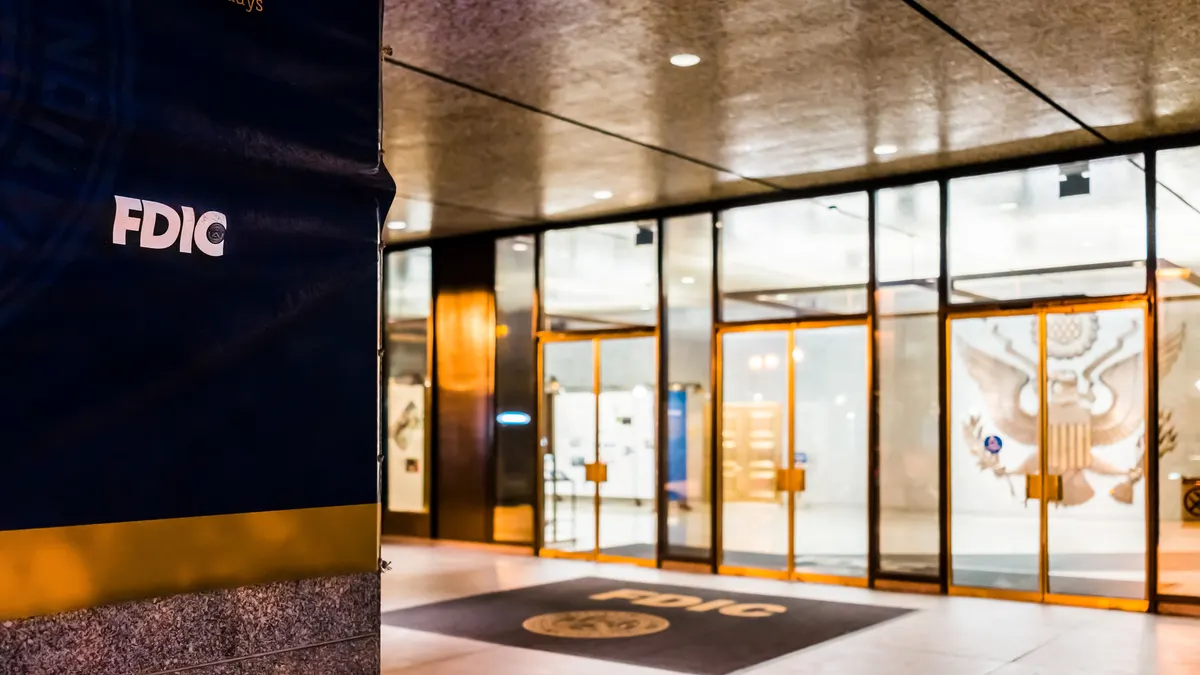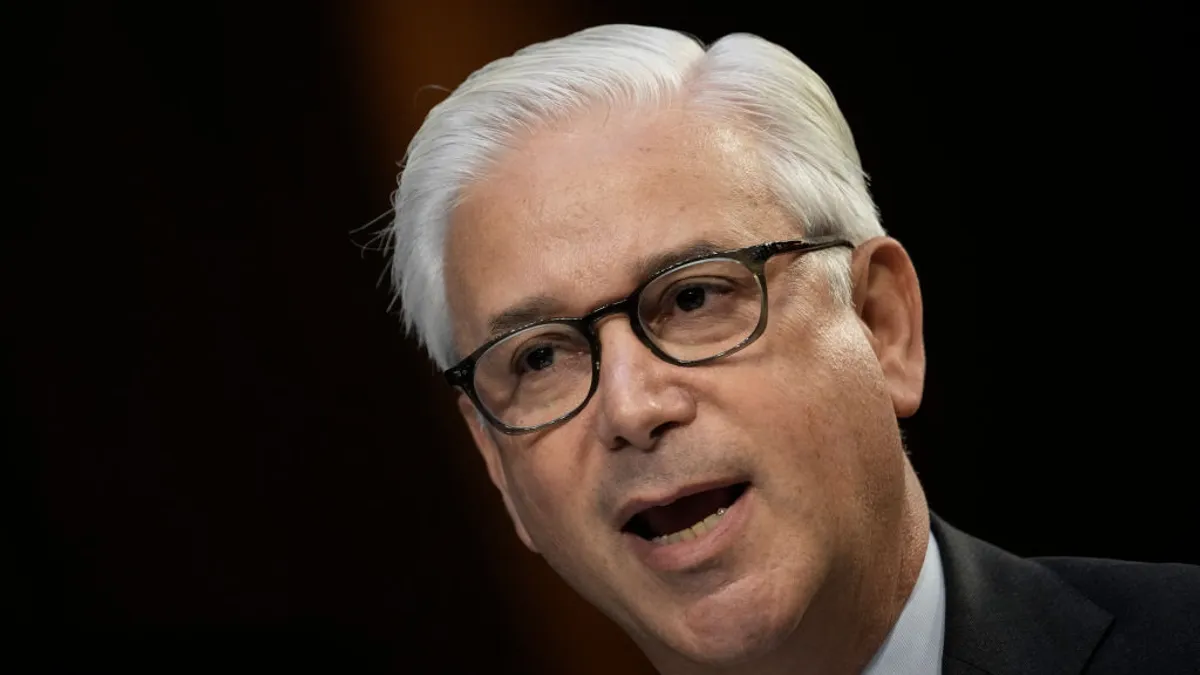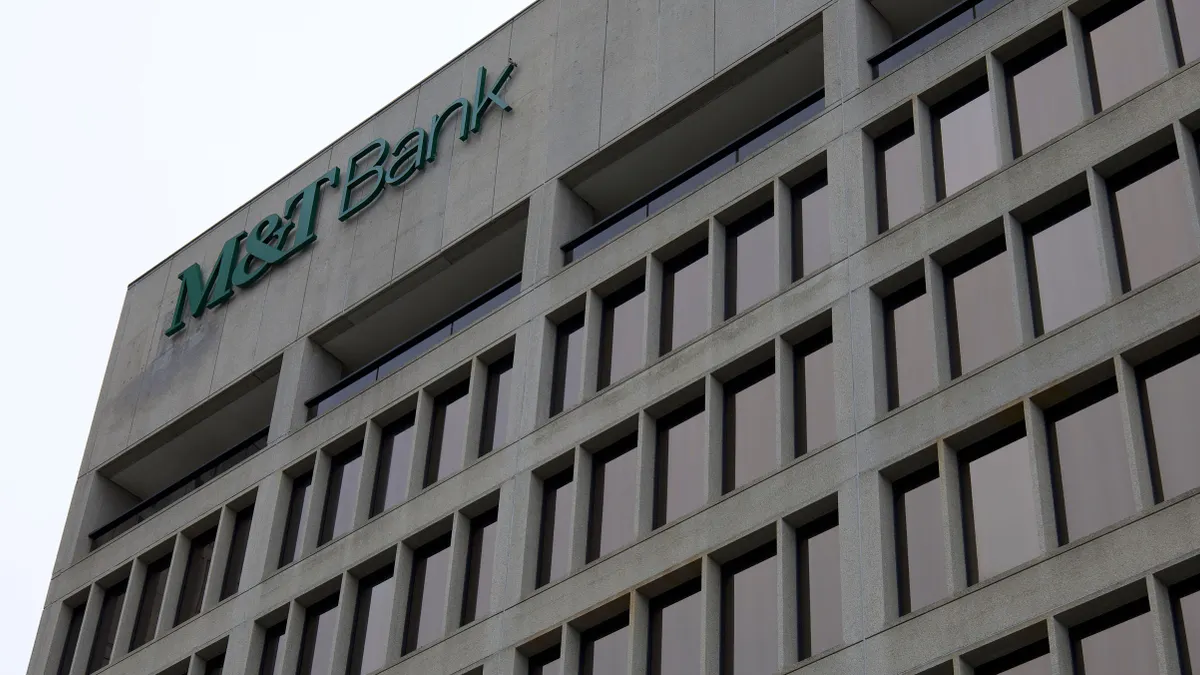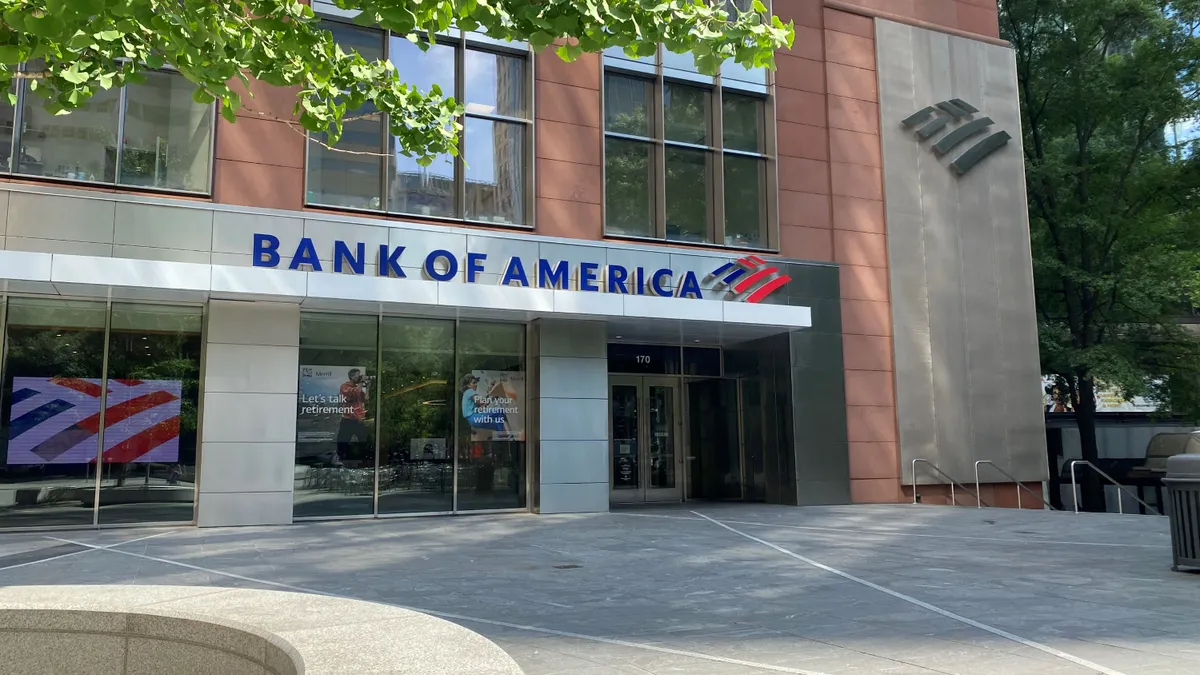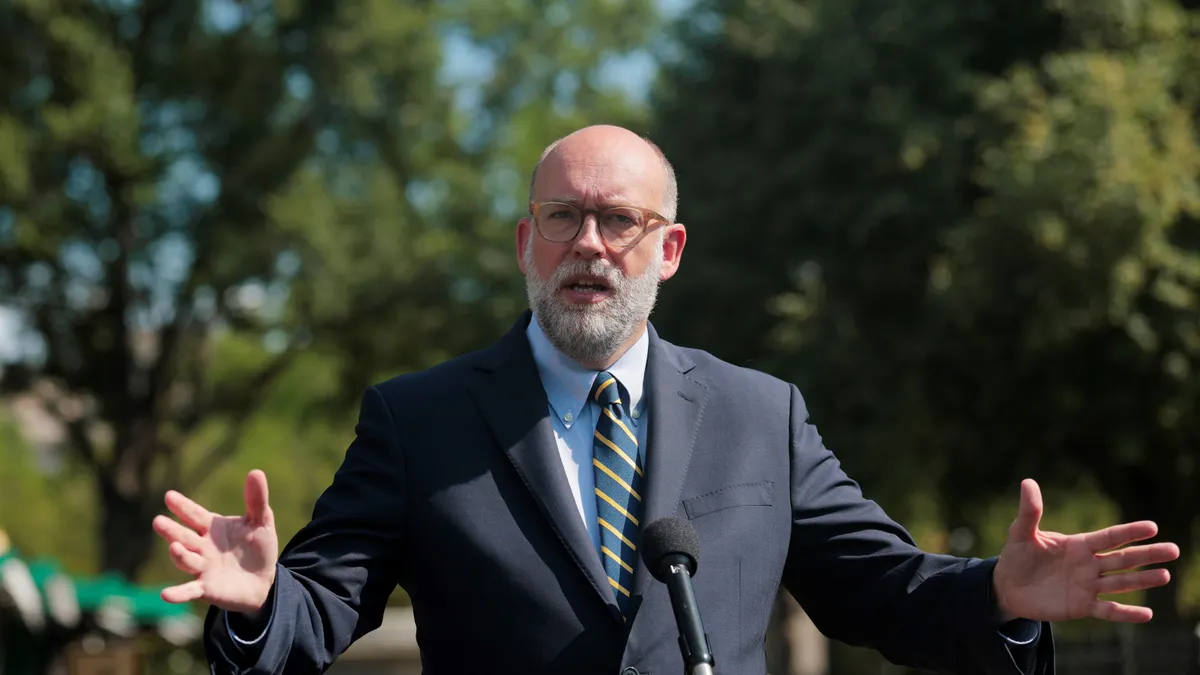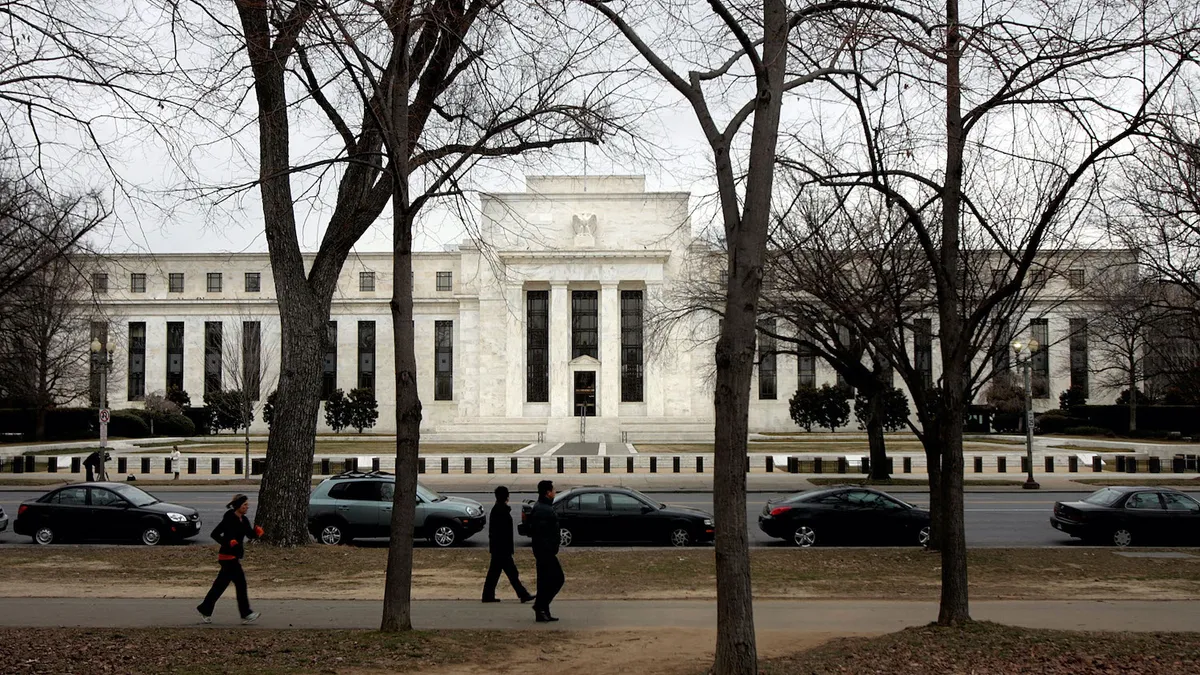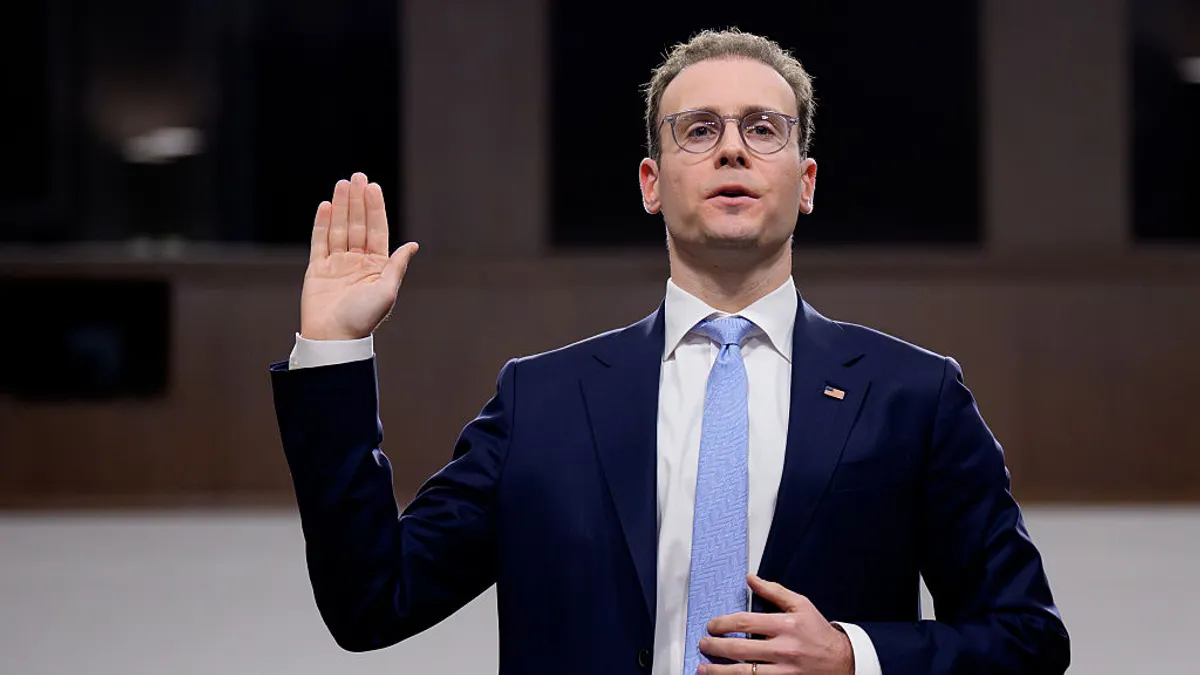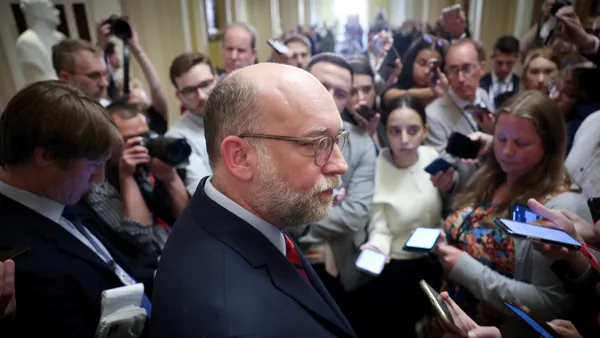As the U.S. bank regulatory system has grown throughout history, so have calls to simplify it.
Bank of America CEO Brian Moynihan this year lamented “the spaghetti chart of overlap” among bank regulators and reiterated suggestions from big-bank executives that it’s time to “start with a fresh sheet of paper.”
The bank regulatory system is a fragmented, complex web that involves a host of national and state agencies focused on lenders operating safely and soundly. Despite periodic efforts to consolidate functions, the general framework is likely here to stay, many observers said.
Each federal agency supervises banks under different charter types. National banks are supervised by the Office of the Comptroller of the Currency; state member banks are supervised by the Federal Reserve and state bank regulators; and state non-member banks are supervised by the Federal Deposit Insurance Corp. and state regulators. The Fed’s purview also extends to bank holding companies and foreign bank offices in the U.S., among other entities.
Additionally, the FDIC manages deposit insurance and failed bank resolutions, while the Fed handles monetary policy and serves as the lender of last resort.
While the framework offers banks choice and fosters competition among regulators, it’s a system that’s tough to figure out if you’re new to it. “If you were to start it from scratch, you wouldn’t want it this way,” said Konrad Alt, co-founder of financial services advisory and investing firm Klaros Group.
How did America’s banking system get here? Federal banking agencies were created in response to crises, where Congress has perceived gaps in oversight. Many agree consolidation is a good idea, even if they differ on the details.
“But the forces of the status quo are strong,” Alt said.
One wild card may be the Trump administration. Reports have surfaced that the White House is looking to consolidate bank regulators (something conservative blueprint Project 2025 called for) without congressional involvement, or transfer employees to different agencies following workforce cuts. At the very least, the administration has sought to slash jobs and consolidate offices within the banking agencies, leaving some on the brink of existence.
How did we get so many regulators?
The genesis of why there are so many bank regulators is essentially “trying to understand how the government is managing financial risk,” said Sean Vanatta, a senior lecturer in financial history and policy at the University of Glasgow and co-author of “Private Finance, Public Power: A History of Bank Supervision in America.”
The federal prudential regulators are:
The OCC, a bureau of the Treasury Department, was created in 1863, with the National Currency Act. That law was “a response to the mishmash of local banks, local money, and conflicting regulatory standards that prevailed before the Civil War,” according to the OCC. It created a new type of federally chartered bank that would float bond offerings to finance the Civil War. But the chartering focus – creating banks and enforcing the rules under which banks operate – didn’t provide an effective means of combating crisis. The comptroller didn’t have a balance sheet, so it couldn’t provide liquidity to financial markets, and it was difficult to oversee the thousands of banks that were created across the U.S.
The Fed was established in 1913 by the Federal Reserve Act, creating a network of reserve banks in large cities and a board of governors in Washington, D.C. The idea was the Fed would focus on central banking and liquidity as a way to manage financial risk distinct from what the OCC or state banking agencies were doing. But during the Great Depression, “it becomes clear that together those two models aren’t really working effectively to prevent crisis,” Vanatta said.
The FDIC was created through the Banking Act of 1933, after thousands of banks failed in the 1920s and early 1930s. President Franklin D. Roosevelt sought to reassure depositors their money would be safe in banks, teeing up the national system of deposit insurance.
While the three regulators were initially seen as alternatives, the U.S. took the position after the Great Depression that central banking, deposit insurance and chartering institutions – whether the OCC or the states – were all needed.
“It’s that kind of repeated process of adopting a risk management framework that’s sort of narrow, and that framework on its own not working effectively enough to prevent financial crisis,” resulting in the current system, Vanatta said.
Predating all of this is state supervision of banks, going back to the early 19th century. Today, it’s a disparate group, since some state bank regulators oversee a large number of banks, while others provide oversight for far fewer banks.
“It is a crazy quilt design that is the product of historical accident, and we’re probably going to stick with it,” said Patricia McCoy, a law professor at Boston College and a former assistant director at the Consumer Financial Protection Bureau.
The CFPB is another financial regulator, though focused on the consequences to consumers rather than the functions of banking itself. Additionally, there’s the Securities and Exchange Commission to consider. And the Commodity Futures Trading Commission, the Federal Trade Commission, the Financial Crimes Enforcement Network and the Federal Financial Institutions Examination Council. The National Credit Union Administration regulates, charters and supervises federal credit unions.
There’s overlap across the system, but that’s been established by Congress, not the agencies themselves. For banks, the compliance cost of that regulatory overlap can be enormous. BofA’s Moynihan noted this year “there’s 100-plus regulators in our building every day.”
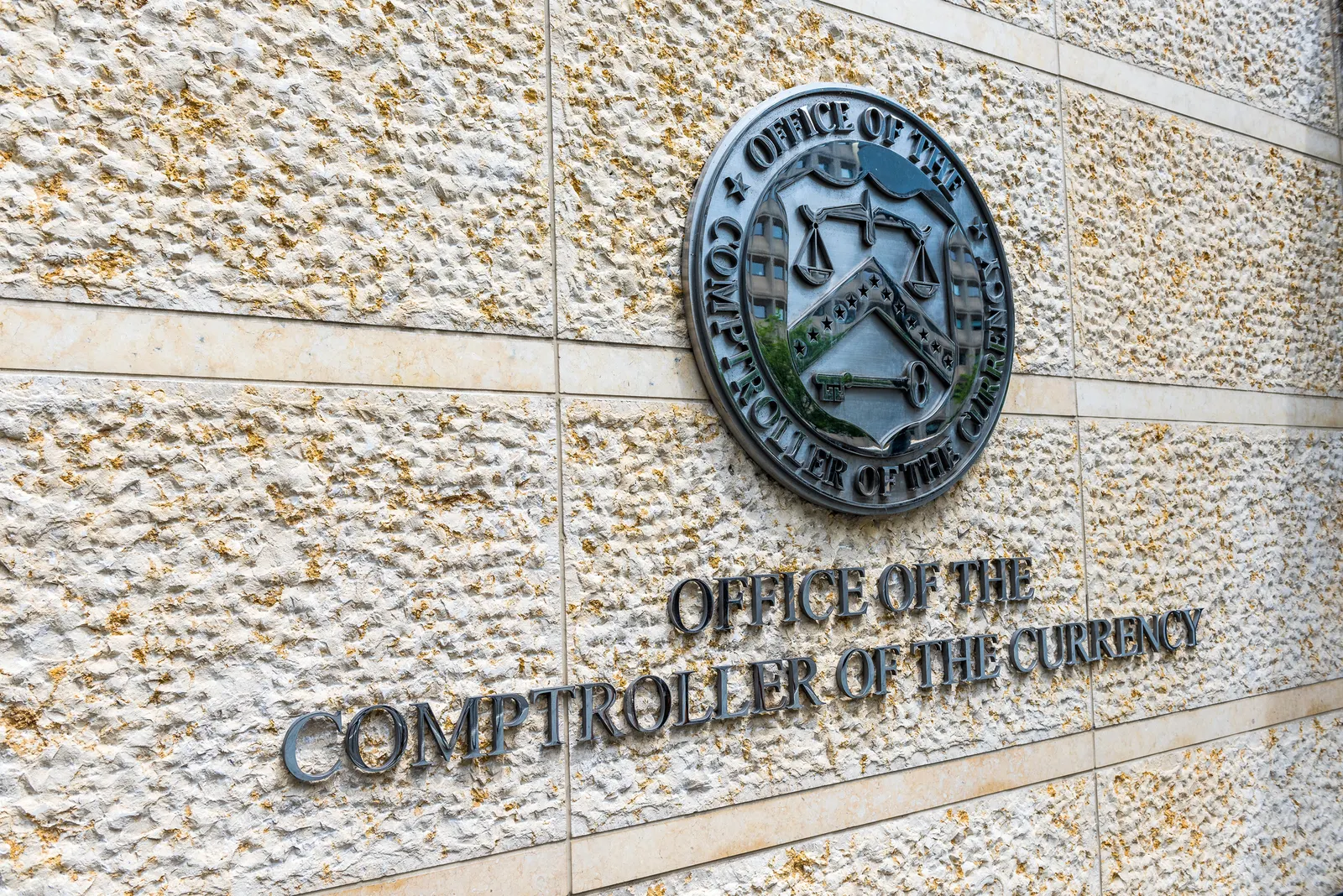
Why hasn’t much changed?
There’s always been pressure around bank regulatory consolidation. Such efforts tend to recur every 15 to 20 years going back to the 1950s, Alt said.
The creation of the Fed, for example, prompted questions about the need to keep the OCC, in part because that move revoked the currency focus for the comptroller. And state versus federal chartering creates different incentives to loosen or strengthen rules as the states and federal government compete over bank charters.
But consolidation efforts, thus far, have fallen short. Alt can testify to that: While a staffer on the Senate Banking Committee, he spent two years working on legislation to consolidate regulators; it garnered bipartisan support in the House and Senate in the early 1990s, but ultimately wasn’t passed.
The bank regulatory system “works adequately, and therefore the case for reform isn’t all that compelling,” Alt said. “It’s strong, logical, but it’s not urgent.”
Pursuing formal consolidation would require congressional action, and therein lies a challenge to proposed reforms.
“Even members of Congress who agree that federal banking legislation should be streamlined may not be able to agree on how to do that,” said Karen Solomon, senior of counsel at law firm Covington & Burling and former OCC official.
Some 21st-century considerations around consolidation involve isolating bank supervision within the OCC, retaining central banking functions at the Federal Reserve, and maintaining the FDIC’s role as deposit insurer.
The need for both state and national chartering is less obvious to some. Others see an opportunity to consolidate all state-chartered banks under a single federal regulator.
An exception among past failed attempts: The Office of Thrift Supervision, which supervised savings and loans institutions, was abolished as part of the Dodd-Frank Act. Congress rolled some of OTS’ functions into the OCC and others into the CFPB.
Merging functions, however, comes with its own considerations, including innovation versus risk and independence from politics.
There are benefits to the current system, including diversity of perspectives and objectives, observers said. “There’s value in having focused risk managers who adopt these different frameworks,” Vanatta said.
The banking system largely isn’t interested in a single regulator with concentrated power. Competition among various bank regulators is healthy and keeps the system on its toes, said Michael Hsu, former acting head of the OCC.
It’s an issue that can pit large banks against small: Bigger banks tend to be annoyed by the plethora of regulators, but smaller banks like the choice, Hsu said. “It does feel like Hamilton versus Jefferson,” he said during a June Brookings event. “That tension’s always been there.”
And the resources required to stay on top of such a large and complicated banking system demand a sizable apparatus.
There’s a comfort factor, too: Consolidation attempts fail “because individual institutions want things the way they are,” said Karen Petrou, managing partner at Federal Financial Analytics. There are, to some degree, captive regulators “everybody’s quite comfortable with,” and arbitrage opportunities between national and state charters that banks don’t want to lose, she added.
Consolidation also presents the possibility that surviving regulators have to split their focus. If FDIC banks were moved under OCC supervision, for example, “if you’re the OCC, where are you going to focus your attention?” said Matthew Bisanz, a partner at the law firm Mayer Brown focused on financial regulation.
“Are you going to focus it on these 4,000 little banks and their unique needs of elder abuse, and branches, and agricultural lending?” Bisanz said. “Or are you going to focus it on the eight money center banks, the failure of any one could bring down the country?”
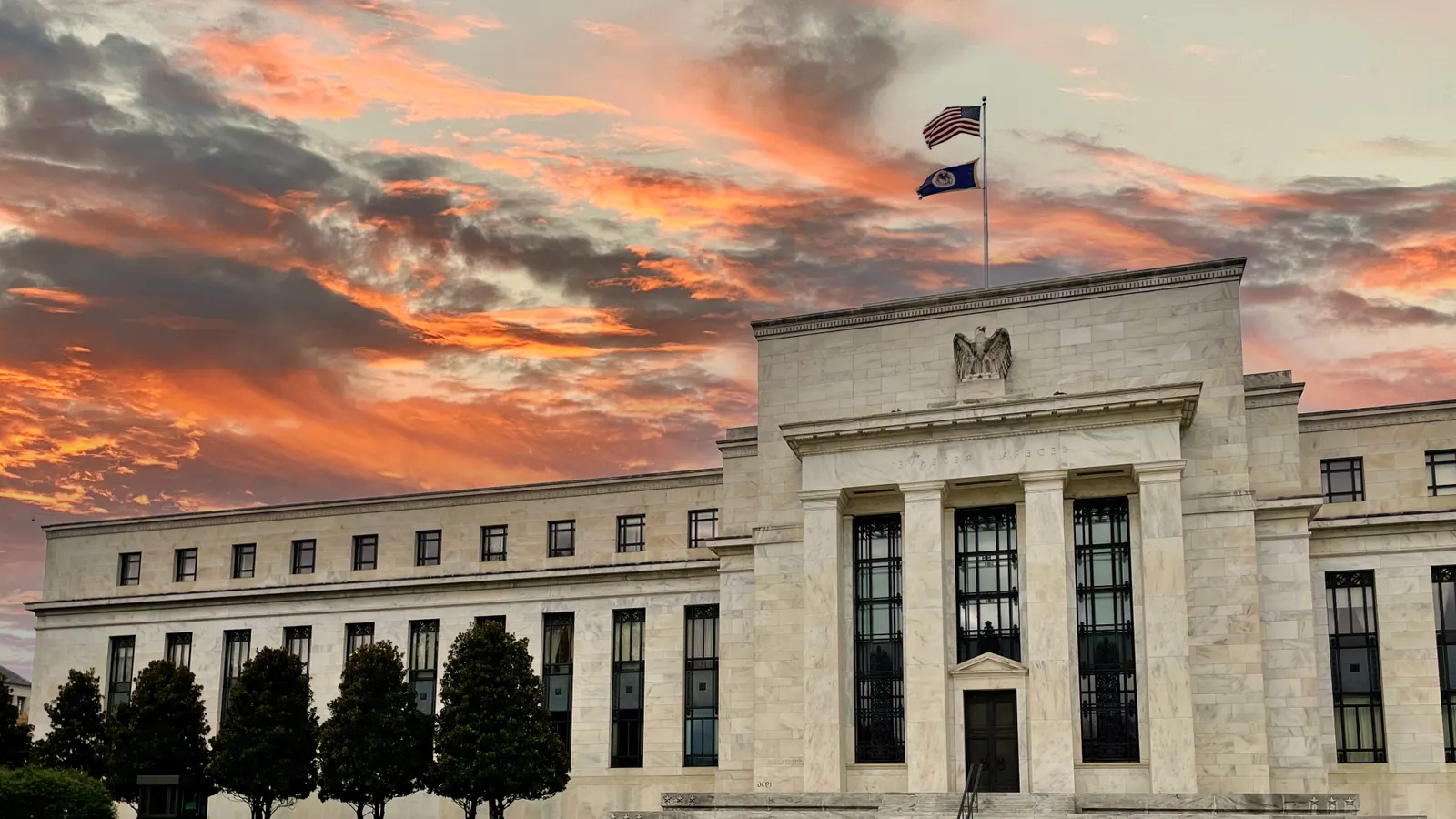
What’s different in the current moment?
With sizable staff cuts at banking agencies – including apparent attempts to all but shut down the CFPB – “it’s clearly the intent of the Trump administration to merge agencies,” said Peter Dugas, executive director at consulting firm Capco.
The Trump administration, amid broader efforts to shrink the size of the federal government, has moved “quickly and aggressively” to modify organizational and staffing models for the agencies, Dugas said. That development points to more unknowns.
Given the administration’s propensity to attempt major actions by executive order, it’s possible the White House may try to realize consolidation that way. Most likely, observers said, is that the Trump administration pursues cost efficiencies and reduces regulatory burdens to garner similar results to what restructuring could produce.
Having Treasury Secretary Scott Bessent act as a sort of “conductor” over the federal banking agencies appears to be another element to the Trump administration’s plans to achieve regulatory reform.
“There is going to be a good deal more coordination amongst the agencies acting as the Treasury Department and thus the White House would like them to act when it comes, at the very least, to regulation and perhaps also supervision,” and that’s unique, Petrou said.
Even if consolidation “seems like an impossible dream” or a massive legislative package not worth pursuing, greater efficiency within the system is needed, said Donald Kohn, who served as vice chair of the Fed from 2006 to 2010.
“There’s got to be a way of moving faster, coordinating better, overcoming some of the objection, so that if a risk is identified, it doesn’t take three years to identify how to build the resilience against that risk,” Kohn said during the Brookings event. “We need to make it more effective and efficient if we’re going to keep all those agencies.”
Consolidation can also be reframed as a chance to capitalize on various agencies’ core strengths to enhance supervision, said Sarah Bloom Raskin, a law professor at Duke University and Biden administration nominee to be the Fed’s vice chair for supervision, during the Brookings event.
Discussions around the bank regulator framework are likely to continue, and that’s a good thing, observers said.
“It is a mistake to just assume that they’re working and that they’re working effectively,” Vanatta said. “[But] it’s better to ask those questions and make decisions – informed decisions – rather than just coming in with a chainsaw, carving things up and hoping for the best.”


